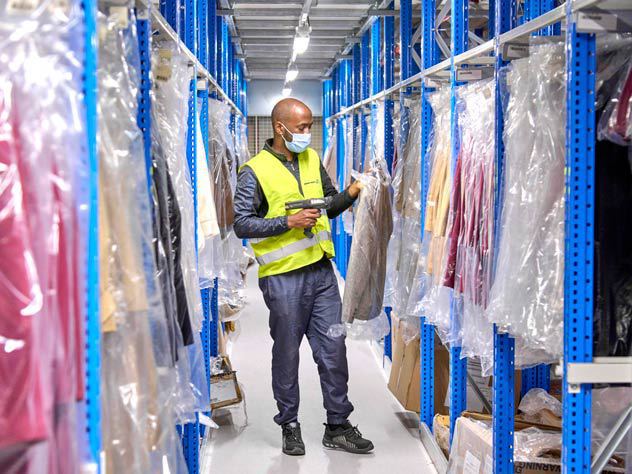Back How to scale your e-commerce channels profitably
Market Insights
How to scale your e-commerce channels profitably
While the first e-commerce transactions happened decades ago, e-commerce has seen unparalleled growth in recent years. Changing customer behaviours and increasing online purchase options are accelerating growth and consumers of every age and demographic are now embracing online sales channels.
The evolution of these consumer trends drive the urgency for effective design and execution of e-commerce supply chains. And not just for business-to-consumer (B2C) e-commerce models, such as fast-moving consumer goods; online portals and marketplaces where businesses sell to other businesses (B2B e-commerce) are also growing exponentially. Growth in online adoption is happening in virtually every industry: examples of this include supplying office equipment and manufacturing items such as machine or electronic parts, For both B2C and B2B e-commerce channels, this means that companies must continue to adapt their e-commerce strategies and supply chains. They want to take advantage of this shift in purchase habits as well as compete with digitally native entrants.
Driven by convenience, more and more consumers and businesses opt to purchase goods and supplies online. This means companies must find ways to compete effectively in this digital era to survive and thrive.
Effective fulfilment strengthens customer experience
Setting up or building out a solid fulfilment capability is critical to respond to these digital trends. Providing a great customer experience is an essential factor in realizing future growth for any business. Recent research has shown 58% of online buyers stop doing business with a company because of poor customer experience (1).
If customers are not satisfied with their online buying experience, they will quickly go elsewhere – and the nature of buying online means that alternatives are readily available. When customers do make a purchase, expectations are high. Customers these days are used to having fast and/or free delivery options and easy returns. If they don’t want to keep their purchase, they want to return it in an easy (and preferable free) way and get a refund quickly, and without hassle. These service expectations make fulfilment and returns management a significant competitive differentiator for brands and e-commerce businesses, and the impact of “not getting it right”, can be detrimental. This is why a superior fulfilment solution should be at the heart of every e-commerce strategy.
Visibility creates the path to profit
The relentless pursuit of growth in e-commerce must be accompanied by an efficient approach to managing supply and demand, costs, and customer experience. Most companies partner with an e-commerce supply chain solution provider for one or multiple parts of their e-commerce supply chain, and here they must work together and with the business to deliver a superior customer experience. This cannot be done well without access to accurate and real-time data insights and operational visibility across the supply chain. The benefits of great visibility are threefold.
Firstly, better visibility enables better cost control and inventory management, and it will give a clearer picture of returns, stock availability and demand. Increased visibility will help better decision making to control costs: quickly and accurately weighing up the true cost of critical supply chain service challenges such as faster vs cheaper delivery.
Secondly, clear supply chain visibility is crucial in managing uncertainty in supply chains and allows businesses to respond to immediate challenges and disruptions. The last 18 months have shown how vulnerable supply chains can become in the light of global events. To deal with these disruptions, and find mitigating alternatives, businesses will need detailed insights in their global flows, cost, and options. Supply chain visibility is a key enabler to build a more resilient supply chain, and this will have direct impacts on product availability and cost.
Finally, visibility is an important first step in managing sustainability initiatives that play an important role in today's environmentally conscious society.
Synchronised e-commerce and supply chain strategies: a powerful combination
Behind every strong e-commerce ecosystem, there should be an effective logistics network and strong collaboration with a capable supply chain partner. A partnership that allows development of fulfilment strategy to scale up in volume, revenue, and profit.
More specifically, a strong supply chain partner must implement effective logistics solutions at every stage of the e-commerce growth and expansion journey and help businesses scale their e-commerce channel. This includes managing fast growth and reaching out to new markets or segments.
In the fashion industry for example, brands sell through different online and offline channels to various customers in multiple marketplaces. To deal with increasing supply chain complexity, we see businesses shift away from single location distribution strategy, towards models where they leverage a network of smaller fulfilment locations closer to customers or enable direct shipping from stores.
Key takeaways – Synchronizing e-commerce growth and supply chain performance
As we see e-commerce play an increasingly important role in markets, the part of high-performing fulfilment solutions for achieving a superior customer experience is evident. Good and accurate data is needed to build a supply chain that reacts to customer needs. With rapid changing buying behaviours and competitive offerings, this is an ever-moving target, only amplified by fast growth. It is important that supply chains continually evolve to deliver on this.
Greater supply chain visibility allows businesses to manage execution better and adopt a more strategic approach to identify supply chain bottlenecks, areas of inefficiencies, and opportunities to increase performance, revenue, and profits. This also creates an environment where e-commerce businesses can scale with supply chain providers, teams, and suppliers.
Crucially, it is a high-performing e-commerce fulfilment model that strengthens the power of the brand and the retail channel. It is imperative that the customer enjoys a positive, memorable purchase experience that inspires trust to see repeat purchases and brand loyalty.
Why not speak to our experienced supply chain team to understand more about leveraging effective strategy to grow your e-commerce sales channel?










